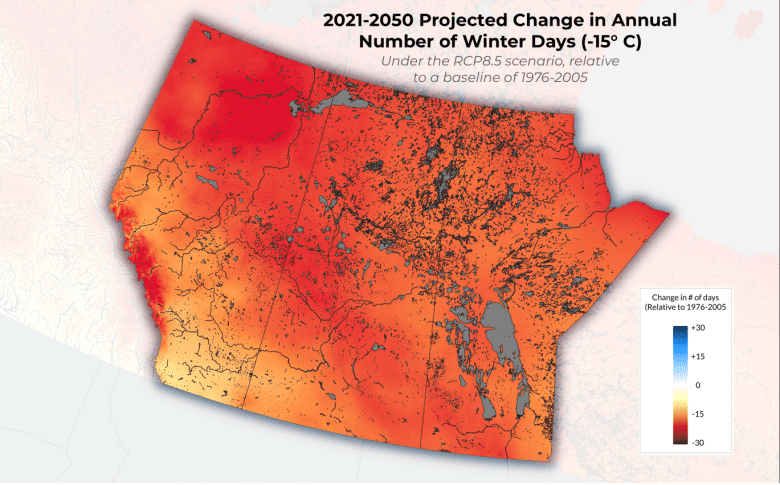Research January 14, 2022
Five Reasons Climate Change Is Bad News for Pond Hockey Fans
By Sumeep Bath, Editorial and Communications Manager, Bryce Gallant, Network Coordinator, ClimateWest
Much like poutine, politeness, and Paul Anka, pond hockey is a proud Canadian institution. From Bonavista to Bella Bella, Canadians grow up waiting for the ice to freeze and then gliding onto those newly formed ponds to play our favourite sport. Prairie-dwellers often jump at the chance to get outside and enjoy the sunny, crisp winter days.
But as we have learned over 50 years tracking the health of lakes at IISD Experimental Lakes Area—the world’s freshwater laboratory—climate change is affecting Canada’s winter lakes and ponds. And the next 50 years are likely to see further change, according to ClimateWest—a hub to help the Prairies adapt to a changing climate.
And that spells bad news for pond hockey fans across the Prairies. Here are just five reasons why.
1) Winters Are Starting Later
IISD-ELA has been tracking the date lakes freeze over since 1969 in northwestern Ontario. We call this special day “ice-on.”
On average, this ice-on date has been getting later and later—in fact, by 1.66 days per decade.
That means pond hockey season has been starting later each year.

2) Lakes Are Frozen for Less Time
Guess what IISD-ELA found when we compared how long lakes were iced over during winter in 1969 versus now? Since 1969, lakes have been frozen over for an average of 18 days fewer (at a rate of 4.24 days per decade).
And it is expected that the number of days of pond ice will continue to decrease in the Prairies if we don’t curb greenhouse gas emissions. ClimateWest knows how we can best predict the impact of climate change on future generations.
Future climate scenarios that consider backyard ice conditions show that the number of days you can skate outside will decline by 19% in Calgary alone from 2015 to 2090.
Yep, that means almost two and half weeks less of pond hockey per year in our kids’ lifetimes.
3) Winters Are Warmer
Remember those already vanished 16.7 days of ice? Well, according to the Climate Atlas, if emissions levels do not change, winters in the Prairies will get even shorter—by 10–20 days by 2050! This means in most people’s current lifetimes, no matter where you live in the Prairie provinces, the winters you experience will be milder than those of your parents and grandparents.
This spells terrible news for pond hockey fans, but also for flora, fauna, and millions of people who depend on lakes and cold weather for their lives and livelihoods.

4) More Rain, Rain, Rain
Thanks to climate change, we expect more winter rain than in decades past on the Prairies.
Less dependable snowfalls, or events where rain falls after snowing and freezes, may lead to fewer events where rain falls after snowing and freezes and the increased flow of water in streams and rivers—all contributing to poor quality or unsafe ice conditions. Good ice safety practices will become ever more important to practicing our traditions of pond skating, backyard rinks, and pond hockey.
5) Winter Weather Whiplash
As temperatures and precipitation levels swing between extremes throughout the winter, it may feel as if you have “weather whiplash”!
One minute, milder weather may risk melting ice, while the next minute, temperatures will be way colder than you expect.
Both extremes will affect your beloved pond hockey: warmer temperatures can cause thaws and slush, while below-normal temperatures bring increased risks of hypothermia and frostbite.
Join The Fight Against Climate Change
ClimateWest and IISD Experimental Lakes Area had joined the Save Pond Hockey Event in Stonewall, Manitoba February 18–20. This Climate and Sport Initiative was created to educate, engage, and empower Canadians to protect our planet for future generations. Although the event has been postponed due to COVID-19, we want you to know there are still opportunities to raise awareness and get involved to save our beloved pastime.
Want to learn more about the impact of climate change on our lakes—and what you can do about it? Visit iisd.org/ela.
Want to learn how you and your community can adapt to the changes in Prairie winters? Contact ClimateWest’s help desk, email us at info@climatewest.ca or call (204) 995-6514.